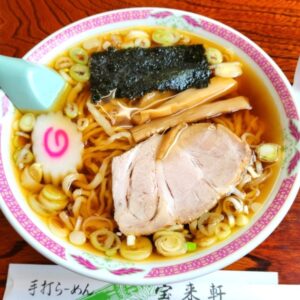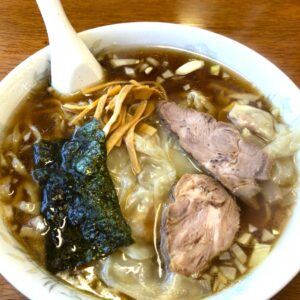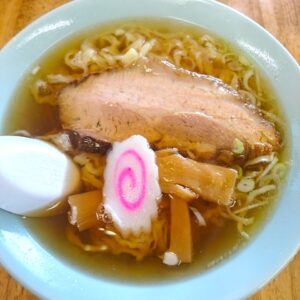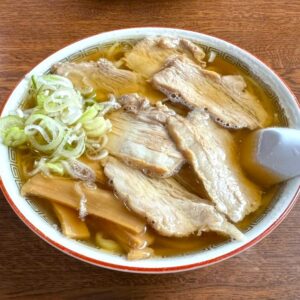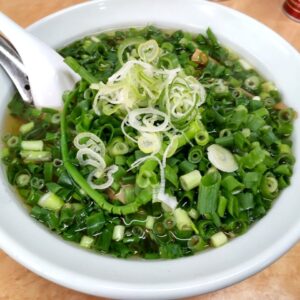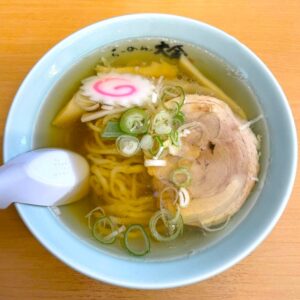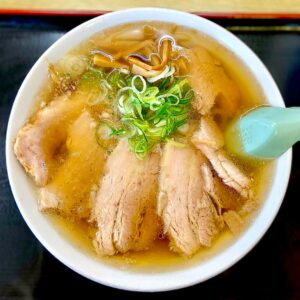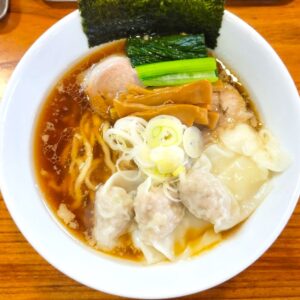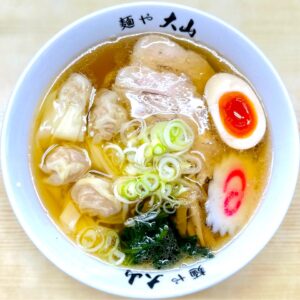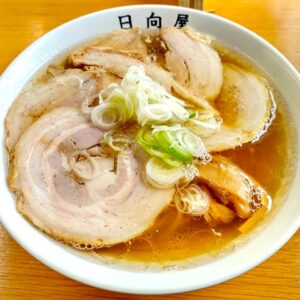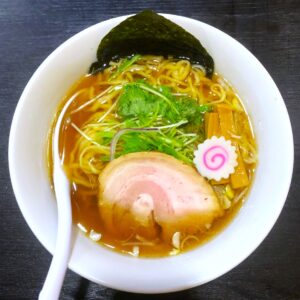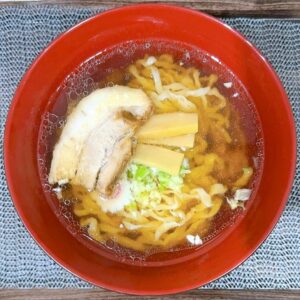Sano Ramen (Tochigi Pref.)
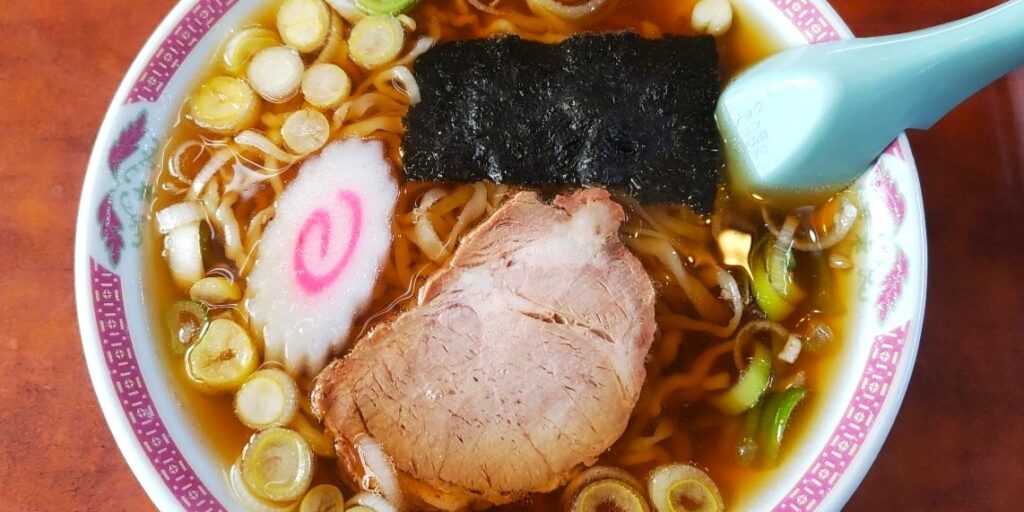
What is Sano Ramen(佐野ラーメン)?
Ramen originated in Sano City, Tochigi Prefecture(栃木県佐野市).
It is characterized by homemade noodles made using a noodle-making technique called Aotake-uchi(青竹打ち; noodle making with bamboo), which involves rolling out the noodle dough while rolling it. Because noodles with a high water content and high elasticity are used, the “Aotake-uchi” process is used, in which the noodles are rolled out using one’s body weight.
The noodles are often flat, and the soup is often made with pork bones or chicken bones and has a rich soy sauce flavor.
Attractive much hydrated (high water content) noodles made with green bamboo
A major feature of Sano ramen is the wide, party horn-like noodles made with green bamboo. The water content is quite high (sometimes close to 50%), and the texture is soft. Depending on the shop, some products come out with a melt-in-the-mouth texture. The soup is chicken based and has a clear soy sauce flavor. The ingredients are pretty standard: chashu, menma, naruto, and green onions. There are nearly 200 ramen shops in the city, making it a ramen town. There is a reason why there are so many ramen shops. Like Kitakata, the water is delicious. Sano’s noodles and soups are made using spring water, which is considered one of Japan’s top 100 waters.
Sano ramen has a long history, and around 1916 there was a Western restaurant called “Ebisu Shokudo(エビス食堂)” that sold ramen. Following this trend, “Horaiken(宝来軒)” was born in 1930. Also, in 1933, “Seiyoken(精養軒)” opened. Those are the origin of Sano ramen.
“Tokano(とかの)” is the most popular among ramen freaks. Due to the small number of seats and the fact that they don’t make multiple cups at the same time even when it’s crowded, there is always a line on weekends. Business ends when the noodles for that day are gone. It often disappears by the afternoon. The beautifully colored soup is prepared by the owner, who has a background in Western cuisine, and the noodles are rather thin for handmade noodles. Although simple, it has an outstanding taste. (*Currently closed)
“Oyaji’s Shop(おやじの店)” has gained popularity for its delicious, soft, large-sized pork belly pork, and the number of shops is increasing. Originally a food stall, it has now grown into a thriving shop with 50 seats. The second shop is run by the eldest son, and the third shop is run by the second son, both of which are popular.
“Moritaya Sohonten(森田屋総本店)” is Sano’s representative shop, which has handed down its noren(banner) to many disciples. The main branch has nearly 100 seats and is popular among families.
“Okazaki noodles(岡崎麺)” is highly rated for its artisanal green bamboo-made noodles. By letting it sit overnight, it has a unique firmness.
“Tashichi(太七)” is a shop opened by a noodle expert who worked at a noodle factory. As expected from a noodle specialist, the noodles are outstanding even in Sano, where the noodles are delicious. The key is to add a little alcohol, beat it with green bamboo, and let it sit for three days.
Oyaji’s Shop 2nd Shop (Masa)’s Charshu-men
The soft charshu made with pork shoulder is popular. It originally started as a food stall, but
The taste has spread to the third shop.

